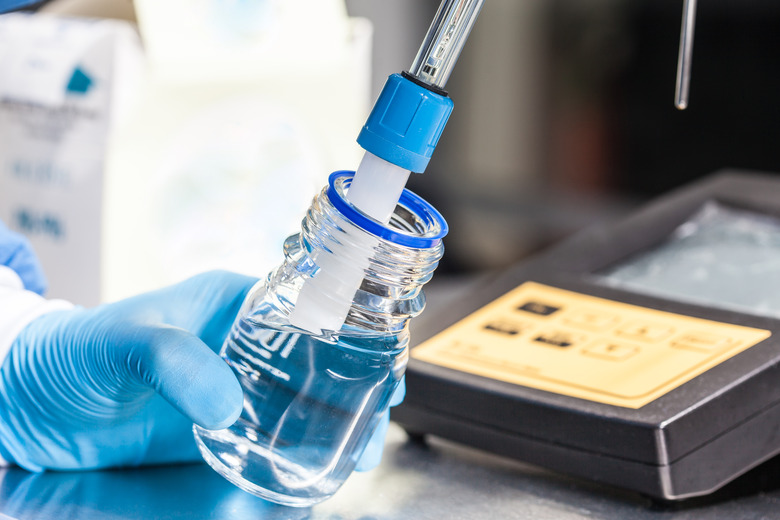Methods For Testing PH Of Liquids
Every substance around you, from the orange juice you drink and the water you use to bathe to the saliva in your mouth, has a pH level. Testing the pH of liquid, which can be done in different ways, tells you whether it is acid, alkaline or neutral. On the pH scale, which runs from 0 to 14, 7 is neutral, anything below 7 is acidic, and anything above 7 is alkaline.
Probe and Meter
Probe and Meter
Before using a pH probe and meter to test pH, test the meter in a substance with a known pH rating to calibrate it. For example, pure or distilled water has a pH level of 7. If necessary, adjust the meter accordingly. Before performing your main pH test, rinse the probe and meter with clean water and dry with a clean tissue. Collect the liquid sample in a clean container that is deep enough to cover the tip of the probe. Use a thermometer to check the temperature of the sample, and then adjust the meter to match the sample temperature. This is an important step because the temperature of the water affects the sensitivity of the probe. Insert the probe into the sample and wait for the measurement to become steady, which indicates the meter has reached equilibrium. The pH level of your sample is now ready to record.
pH Testing Strips
pH Testing Strips
pH testing strips contain a series of indicator bars that each change color after exposure to a solution. The strength of the acids and bases on each bar differs. Collect a sample of liquid in a clean container, ensuring the sample is deep enough to cover the testing strip. Dip a strip into the sample for a few seconds and wait for the indicator bars on the paper to change color. Compare the end of the test strip with the color chart that came with the paper to establish the pH level of the liquid.
Red Cabbage Juice
Red Cabbage Juice
One interesting method of testing the pH of a liquid uses red cabbage juice as a pH indicator. When the cabbage juice is mixed with different liquids, the solution changes color thanks to a pigment in red cabbage called flavin – an anthocyanin. If the color changes to pink, the pH is 1 to 2. If the color becomes dark red, the pH is 3 to 4. If the color changes to violet, the pH is 5 to 7. If the color changes to blue, the pH is 8. If the color turns blue-green, the pH is 9 to10. If the color becomes green-yellow, the pH is 11 to 12. This means that pink and dark red solutions are acidic, violet solutions are either acidic or neutral, and blue, blue-green and green-yellow solutions are alkaline.
Cite This Article
MLA
Gillespie, Claire. "Methods For Testing PH Of Liquids" sciencing.com, https://www.sciencing.com/methods-testing-ph-liquids-5809509/. 26 April 2018.
APA
Gillespie, Claire. (2018, April 26). Methods For Testing PH Of Liquids. sciencing.com. Retrieved from https://www.sciencing.com/methods-testing-ph-liquids-5809509/
Chicago
Gillespie, Claire. Methods For Testing PH Of Liquids last modified March 24, 2022. https://www.sciencing.com/methods-testing-ph-liquids-5809509/
